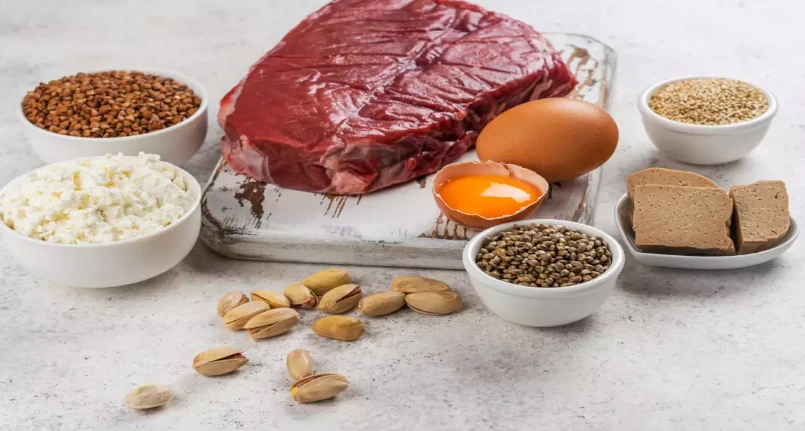The dangers induced by an excess of red meat in the diet are directly proportional to the abuse of its consumption.
A frequency of two or three portions of meat a week does not seem to contribute to the pathogenesis of any disease, provided that the whole diet is balanced and the cooking methods suitable.
Cardiovascular diseases
Although with a certain variability in the sources consulted, the meat of ox, cow, bull, sheep, horse, ram, buffalo and adult pig belongs to the category of red meat.
The percentage of saturated fat varies not only according to the animal species, but also and above all according to the cut of meat.
Animal products, therefore also red meat, are foods that contain saturated lipids and bring more or less important quantities (depending on the cut and portion) of exogenous cholesterol . Therefore, the first danger to which the abuse of red meat refers is the alteration of lipidemia.
An excessive intake of dietary cholesterol and saturated fatty acids can cause (especially in sedentary and predisposed subjects) a direct and indirect increase in total cholesterol and above all in LDL lipoproteins . This results in an increase in cardiovascular risk attributable to the formation of atherosclerotic plaques which end up occluding the blood vessels .
Osteoporosis
Red meat provides a significant amount of animal protein and about 40-60g derive from each portion (200-300g). The abuse of animal protein consumption carries a rather important risk of developing a reduction in the metabolic efficiency of calcium . Therefore, if introduced in excess , animal proteins could favor the onset of a bone disease called osteoporosis. However, not all authors agree in considering the high protein diet a risk factor for osteoporosis, since it, in addition to increasing the urinary excretion of calcium, has a positive effect on its intestinal absorption; it also seems to stimulate the secretion of osteo-anabolic hormones, such as IGF-1. In any case, the hypercalciuria associated with high-protein diets can be effectively compensated for by the simultaneous and generous intake of alkalizing foods ( fresh fruit and vegetables ).
Kidney fatigue
The increase in the amino acid supply deriving from animal proteins also determines the increase in blood urea nitrogen levels , since the amino acids which are not used in the anabolic processes constitute a substrate for neoglucogenetic and liposynthetic transformation .
This occurs in hepatocytes (liver cells) after deamination (deprivation of the amino group) of the nitrogenous groups from the carbon skeleton. The catabolites, which are mainly made up of ammonium, require a final conversion into urea to be expelled in the urine.
The excess protein in the diet favors the accumulation of urea causing continuous and persistent renal fatigue. According to many studies, this condition could lead to serious disorders such as chronic nephritis.
Gout
As if that weren’t enough, red meat is one of the foods that provides the largest amount of purines ; these derive from the digestive catabolism of nucleic acids which, following their metabolisation, favor hyperuricemia . In other words, among the dangers deriving from an excess of red dogs there is also the risk of hyperuricemia (gout) and related osteo-articular complications (sediment and precipitation of crystals) and kidney complications (stones ) .
Gastritis and Reflux
Digestion of red meat takes the stomach considerably , which secretes large quantities of hydrochloric acid (HCl). Lowering the pH is critical for proper protein denaturation and activation of pepsinogen to pepsin ; however, a high protein content determines the slowing down of the travel times of the chyme , due to the long permanence in the gastric tract. In subjects who abuse red meat, especially cooked for a long time and in the evening, gastric and duodenal acidosis increases the risk of incidence of gastritis , ulcers and stomach cancer .
For the same reason, in subjects predisposed to or affected by incontinence of the lower gastroesophageal sphincter , there is an increased incidence of gastric reflux which, in the long term, causes oesophagitis , Barrett’s esophagus and probably oesophageal cancer .
Red meat and cancer
Regardless of the amount of protein, the excessive consumption of red meat also favors the indirect increase of some dangers inherent in the neoplastic (tumor) incidence of the stomach and intestines.
Residues of nitrites used in agriculture and those added as a preservative in processed meats combine with dietary amines to form nitrosamines . The high and frequent consumption of sausages containing nitrates and nitrites determines the increase in the combination of nitrosamines, which have a very high carcinogenic power in the stomach.
2015 – The glare of the newspapers
In October 2015, the International Agency for Research on Cancer (IARC), part of the WHO (World Health Organization), included PROCESSED meat among the substances that can cause cancer in humans.
This news, which was given wide media prominence, aroused excessive and unjustified alarmism in the population, thanks to coarse and misleading information .
Let us therefore try to clarify some fundamental aspects present in the scientific publication relating to this event.
Which Tumors?
- First of all, the relationship has been epidemiologically ascertained “only” for colorectal cancer , which in Italy represents about 13-14% of all recorded cases of cancer, ranking third for incidence in men and second in women .
- A less certain link has instead been identified with stomach cancer , which in Italy represents about 5% of all registered cases of cancer.
We are therefore talking about a report that IS NOT ABOUT ALL KINDS OF CANCER, ONLY COLON-RECTAL CANCER and probably stomach cancer.
Which Meats?
Another very important aspect concerns the quality of the meat , since the study explicitly mentions:
- PROCESSED meats , i.e. those that are salted, dried, fermented, smoked, treated with preservatives to improve their flavor or preserve them.
So we are not talking about fresh meats , but about preserved meats (to be clear salami, especially if smoked, canned meats and meat-based sauces).
With all due respect to vegans , the relationship between meat and colon cancer is not certain for the classic “grilled” Florentine steak and other fresh red meats, but ONLY for SALUMI, WURSTEL, SMOKED MEATS and generally preserved.
The study, therefore, does not discover anything new , given that the dangers of preservatives used in processed meats (particularly nitrates and even more so nitrites) have been known for years.
Fresh red MEATS
With regard to fresh red meats (beef, lamb and pork), the study classifies them as ” probably carcinogenic ” with reference to three specific types of cancer: colorectal, prostate and stomach.
To obtain a correct view , the statistics should in any case be differentiated by type and cut of meat; for example, the oncogenic risk is probably significant for those who consume 200 grams of pork sausages per day, while it is not for those who consume similar quantities of beef tenderloin .
Pay attention to the cooking method
As far as fresh meat is concerned, remember that cooking at high temperatures generates toxic and carcinogenic substances.
Lean fresh meat does not appear to be carcinogenic and this is all the more true the more sober the cooking; to be clear, you should avoid burning parts of the food, giving up the classic “black streaks” left by the embers and the grill.
Relationship with Other Risk Factors
It is logical to expect that the consumption of preserved meats is more common among population groups that are generally less attentive to nutrition and their own health.
Conversely, among vegetarians and vegans, attention to their own health is generally greater; in this group, it is therefore logical to expect lower percentages of smokers, alcoholics and overweight people, greater attention to physical activity and a greater intake of antioxidants , dietary fibers and other protective nutrients for colon and stomach cancer and prostate.
A serious and reliable comparison should therefore be made between two populations with the same risk factors, with the exception of the one to be evaluated.
Considering only the nutritional aspect or further reducing the comparison to a single food group leads to big mistakes.
This has led many experts to overstate the alleged benefits of a vegetarian or vegan diet as an element of cancer prevention.
Importance of Cooking
The dangers of excessive consumption of red meat also include those related to the formation of toxic compounds deriving from the carbonization of proteins.
Particularly rapid and intense cooking ( grill and plate ) favor the production of highly toxic and carcinogenic compounds: aromatic polycyclic hydrocarbons , of which the most harmful is undoubtedly benzopyrene. Those deriving from food mainly affect the stomach, intestines , liver and bladder .
Dysbiosis
Less incisive in healthy subjects, but decisive in geriatric patients, is the alteration of the intestinal bacterial flora . In old age, albeit rare, the abuse of meat consumption at the expense of foods containing dietary fiber promotes faecal stagnation (due to constipation ) and predisposes the development of pathogenic microorganisms inside the intestinal lumen. These saprophytic colonies determine the lowering of the pH , faecal putrefaction and the accumulation of toxins , reducing the physiological bacterial flora to the detriment of its functions (immune and vitamin synthesis: vitamin K , vitamin PP and small quantities of vitamin B12.




